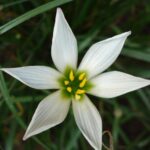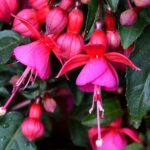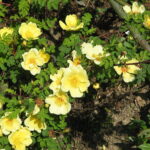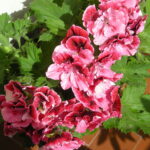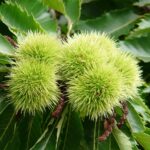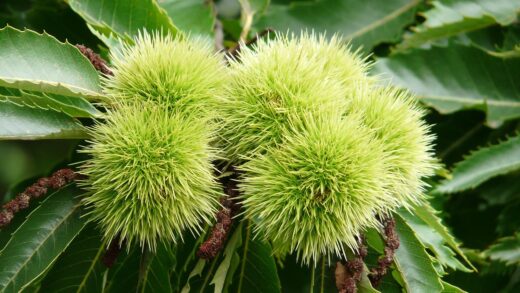The care of the black-eyed susan vine

Thunbergia alata, commonly known as the black-eyed susan vine, is a delightful and fast-growing climbing plant that brings a touch of tropical vibrancy to any garden setting. Its distinctive, brightly coloured flowers with dark central eyes make it a popular choice for trellises, hanging baskets, and containers. To ensure this plant thrives and produces a profusion of blooms throughout the growing season, a dedicated care regimen is essential. This involves a careful balance of providing adequate sunlight, consistent moisture, and the right nutritional support, alongside structural assistance for its climbing habit.
Understanding the fundamental nature of this vine is the first step towards successful cultivation. As a plant native to warm climates, it has specific temperature preferences and is highly intolerant of frost, which dictates its treatment in temperate zones. While it can be grown as a perennial in tropical or subtropical regions, it is most commonly treated as an annual in cooler areas, completing its life cycle in a single season. The plant’s rapid growth rate is one of its most appealing features, but this also means it requires consistent attention to prevent it from becoming tangled or overwhelming its support structure.
The aesthetic appeal of the black-eyed susan vine lies in its simple yet striking flowers, which typically feature five petals surrounding a prominent, dark purplish-brown “eye” or tube. Flower colours range from the classic bright orange and yellow to shades of white, cream, and even reddish tones, often available in various cultivars. These blooms are produced continuously from early summer until the first frosts, providing a long-lasting display of colour. The heart-shaped or triangular leaves are a rich green, creating a lush backdrop for the vibrant flowers.
Successful long-term care begins with selecting an appropriate location and providing the necessary environmental conditions from the start. This proactive approach prevents many common issues before they can arise, leading to a healthier and more resilient plant. Factors such as soil composition, sun exposure, and protection from harsh winds play a crucial role in the plant’s overall vigour and flowering capacity. By mimicking its native habitat as closely as possible, gardeners can unlock the full potential of this charming and rewarding vine.
Optimal location and sun exposure
Choosing the right site is arguably the most critical factor in the successful cultivation of Thunbergia alata. This vine flourishes in a position that receives ample direct sunlight, which is essential for prolific flower production. A location offering at least six to eight hours of full sun per day is considered ideal for achieving the most vibrant display of blooms. Insufficient light will result in a leggy plant with sparse foliage and significantly fewer flowers, detracting from its ornamental value.
More articles on this topic
While the black-eyed susan vine is a sun-lover, in regions with particularly intense and hot midday sun, some protection can be beneficial. A spot that receives full morning sun and some light afternoon shade can prevent the leaves from scorching and reduce water stress on the plant during the hottest part of the day. This is especially important for plants grown in containers, as the soil can heat up and dry out much faster than in a garden bed. Monitoring the plant’s response to its location will help determine if adjustments are needed.
The orientation of the planting site also plays a significant role. A south-facing or west-facing wall, fence, or trellis is often perfect, as these locations capture the most sunlight throughout the day and provide warmth. This warmth can help to stimulate vigorous growth and encourage earlier flowering. Furthermore, planting near a structure can offer some protection from strong winds, which can damage the delicate stems and flowers of the vine.
Beyond sunlight, the physical space allocated to the plant is an important consideration. Given its rapid and enthusiastic climbing habit, it requires a sturdy support structure to cling to, such as a trellis, arbor, or fence. Ensuring this support is in place at the time of planting prevents disturbing the root system later on. The vine can reach heights of up to two to three meters in a single season, so the support should be sufficiently tall and strong to accommodate this growth.
Soil requirements and preparation
The foundation for a healthy black-eyed susan vine is high-quality, well-prepared soil. This plant thrives in soil that is rich in organic matter, fertile, and, most importantly, well-draining. Poor drainage is a significant threat, as waterlogged soil can quickly lead to root rot, a fungal disease that can be fatal to the plant. The ideal soil structure should retain enough moisture to keep the roots hydrated but allow excess water to drain away freely.
More articles on this topic
Before planting, it is highly advisable to amend the native soil to improve its structure and nutrient content. Incorporating generous amounts of compost, well-rotted manure, or other forms of organic matter will enhance both drainage in heavy clay soils and water retention in sandy soils. This amendment also provides a slow-release source of essential nutrients that will support the plant’s vigorous growth throughout the season. Aim for a soil pH that is neutral to slightly acidic, generally between 6.0 and 7.0.
For container cultivation, using a high-quality, all-purpose potting mix is the best approach. Look for mixes that contain ingredients like peat moss, coir, perlite, or vermiculite, which are designed to provide an optimal balance of aeration, drainage, and moisture retention. Avoid using standard garden soil in pots, as it is too dense, compacts easily, and can harbor pests and diseases. The limited volume of soil in a container makes the quality of the potting medium even more critical for the plant’s health.
Proper soil preparation at the time of planting sets the stage for a successful growing season. When planting in a garden bed, dig a hole that is twice as wide and just as deep as the plant’s root ball. This loosened soil around the plant encourages the roots to spread out and establish themselves quickly. After placing the plant in the hole and backfilling with the amended soil, water thoroughly to settle the soil and eliminate any air pockets around the roots.
Providing adequate support
From the moment it is planted, the black-eyed susan vine will begin its quest to climb, making the provision of a suitable support structure a non-negotiable aspect of its care. The plant climbs by twining its flexible stems around a support, so the structure must have elements that are slender enough for the stems to grasp. Trellises, obelisks, arbors, and netting are all excellent choices for this purpose. The support should be installed either before or at the time of planting to avoid damaging the developing root system.
The type of support chosen can also influence the aesthetic presentation of the vine. A fan-shaped trellis against a wall can create a beautiful, two-dimensional display of flowers and foliage. An obelisk or tuteur placed in the center of a large container or garden bed allows the vine to create a stunning vertical accent, a pillar of colour. For a more naturalistic look, the vine can be encouraged to scramble up and through larger shrubs or over a fence, intermingling with other plants.
Initially, the young vine may need some guidance to find and begin climbing its support. Gently wrap the young, flexible stems around the lower parts of the trellis or tie them loosely with soft plant ties or twine. Once the vine has latched on, it will typically continue its upward journey without further assistance. It is important to check on the plant periodically to ensure the stems are not becoming girdled by ties and to gently guide any errant shoots back towards the support structure.
The material and stability of the support are also important considerations. Given the plant’s rapid growth, it can become quite dense and heavy by mid-summer, especially after rain. The support structure must be strong enough to bear this weight without bending or breaking. Materials like sturdy wood, metal, or heavy-duty plastic are suitable. Ensure the structure is securely anchored in the ground or attached to a wall to prevent it from toppling over in strong winds.
Watering and moisture needs
Consistent and appropriate watering is vital for maintaining the health and flowering of Thunbergia alata. This vine prefers evenly moist soil and does not tolerate drying out completely. During the peak growing season, especially in hot and dry weather, it may require watering daily, particularly when grown in containers which lose moisture more rapidly. The goal is to keep the soil consistently damp to the touch, but never waterlogged or saturated, as this can lead to root problems.
The best way to determine when to water is to check the soil moisture directly. Insert a finger about an inch or two into the soil; if it feels dry at that depth, it is time to water. Water the plant deeply at the base, allowing the water to soak down and encourage a deep, extensive root system. Avoid shallow, frequent watering, as this promotes weak, shallow roots that are more susceptible to drought stress. Using a soaker hose or drip irrigation can be an efficient way to deliver water directly to the root zone while keeping the foliage dry, which helps prevent fungal diseases.
The water needs of the plant will fluctuate depending on several factors, including temperature, sunlight, humidity, and the size of the plant. A large, mature vine in full sun on a hot day will transpire a significant amount of water and will require much more frequent irrigation than a small, young plant in cooler, overcast conditions. It is essential to be observant and adjust the watering schedule in response to these changing environmental conditions and the plant’s growth stage.
Overwatering is just as detrimental as underwatering and is a common mistake in caring for this plant. Signs of overwatering include yellowing leaves, wilting despite moist soil, and a general lack of vigour. To prevent this, ensure the planting location or container has excellent drainage. If the plant is in a pot, make sure it has ample drainage holes at the bottom and that these holes are not blocked. Allowing the top layer of soil to dry out slightly between waterings is a good practice to avoid creating constantly saturated conditions around the roots.
Fertilization and feeding schedule
To fuel its rapid growth and continuous production of flowers, the black-eyed susan vine is a relatively heavy feeder that benefits from regular fertilization throughout the growing season. A balanced diet of essential nutrients is key to promoting lush foliage and, most importantly, a profusion of vibrant blooms. Starting with nutrient-rich soil is beneficial, but supplemental feeding will be necessary to sustain the plant’s performance from summer through to the first frost.
A good feeding strategy is to use a balanced, water-soluble fertilizer every two to three weeks. A fertilizer formulated for flowering plants, which typically has a higher phosphorus content (the middle number in the N-P-K ratio), is an excellent choice. Phosphorus is crucial for bloom development and root health. Follow the manufacturer’s instructions for dilution rates carefully, as applying a fertilizer that is too concentrated can burn the plant’s roots and cause damage.
Alternatively, a slow-release granular fertilizer can be incorporated into the soil or potting mix at the time of planting. This type of fertilizer breaks down gradually over several months, providing a steady supply of nutrients to the plant. This method can be more convenient as it reduces the need for frequent liquid feeding. However, even with a slow-release fertilizer, a fast-growing vine in a container may benefit from occasional supplemental liquid feeds during the peak of its flowering period.
It is important to monitor the plant’s appearance for signs of nutrient deficiencies or excesses. Yellowing leaves can indicate a lack of nitrogen, while a lack of flowers despite lush green growth may suggest an excess of nitrogen relative to phosphorus. Cease fertilization in the late autumn as the weather cools and the plant’s growth naturally slows down. Continuing to feed a plant that is entering dormancy can be wasteful and potentially harmful.
Common care challenges and solutions
Even with diligent care, gardeners may encounter some common challenges when growing the black-eyed susan vine. One frequent issue is a lack of flowering. This is most often caused by insufficient sunlight, so the first step is to assess if the plant is receiving at least six hours of direct sun per day. Another cause can be an imbalance in fertilization; too much nitrogen will promote vigorous leaf growth at the expense of flowers. Switching to a high-phosphorus “bloom booster” fertilizer can often remedy this situation.
Wilting is another common concern, and it can be caused by two opposite problems: underwatering or overwatering. If the plant is wilting and the soil is dry to the touch, the solution is straightforward—provide a deep and thorough watering. However, if the plant is wilting but the soil is soggy, this indicates a more serious problem of root rot due to poor drainage or excessive watering. In this case, reduce watering immediately and ensure the pot or soil has adequate drainage. It can be difficult for a plant to recover from advanced root rot.
Pest infestations, particularly from spider mites and aphids, can also pose a challenge. These tiny insects feed on the plant’s sap, causing stippling on the leaves, yellowing, and distorted growth. Inspect the plant regularly, especially the undersides of the leaves, for any signs of pests. If an infestation is detected early, it can often be managed by spraying the plant with a strong jet of water or by using insecticidal soap or horticultural oil.
Finally, the vine can sometimes become a tangled mess if not properly managed. This is not a health issue for the plant but can be an aesthetic problem. The key to preventing this is to provide a suitable support structure early on and to gently guide the growing stems onto the support as needed. Light pruning of overly aggressive or wayward shoots can help maintain a more orderly and attractive shape, ensuring good air circulation through the plant, which also helps to prevent diseases.
📷 Forest & Kim Starr, CC BY 3.0, via Wikimedia Commons








